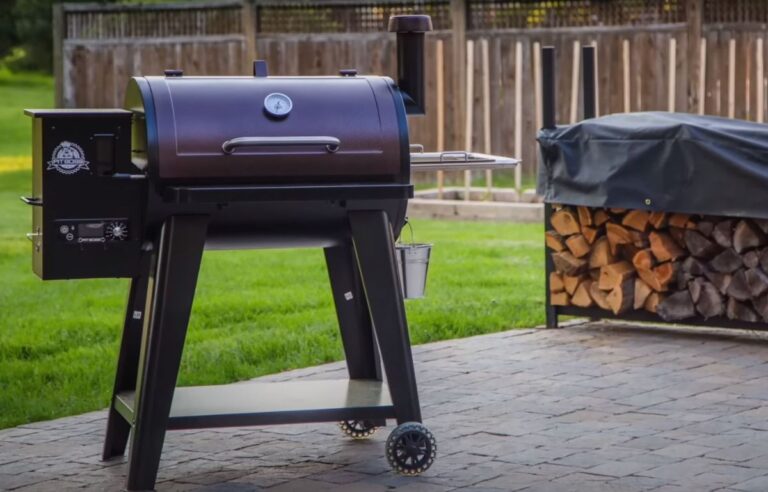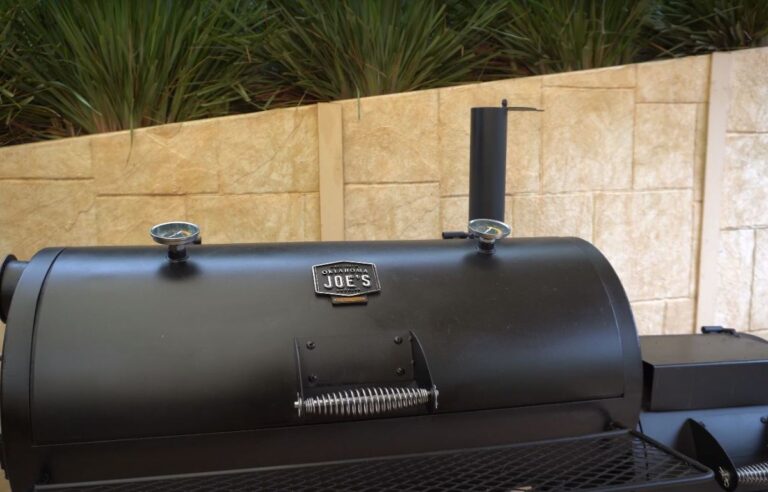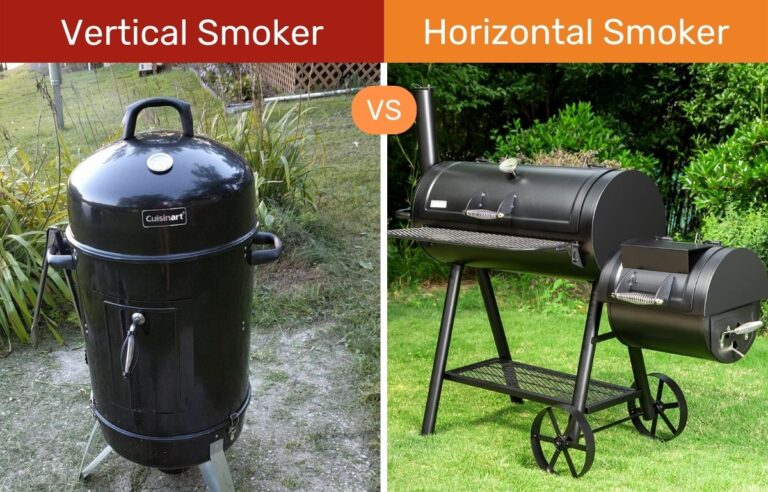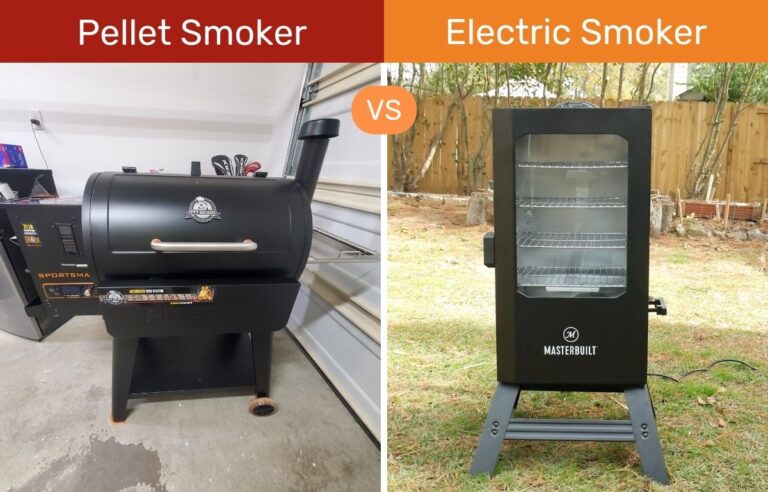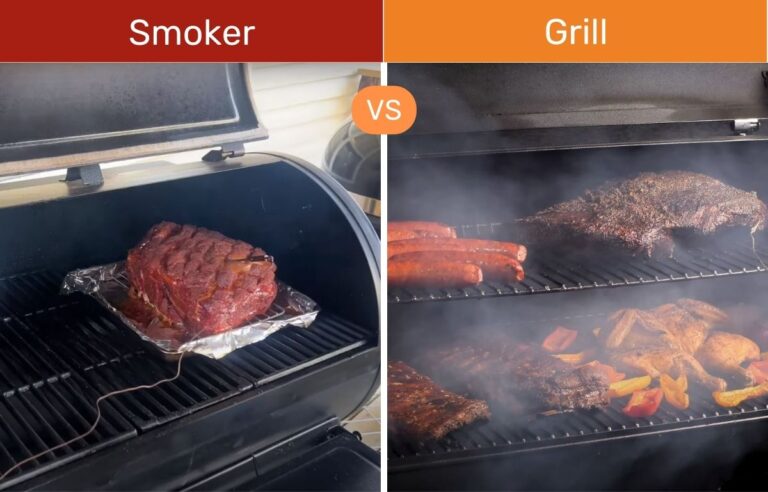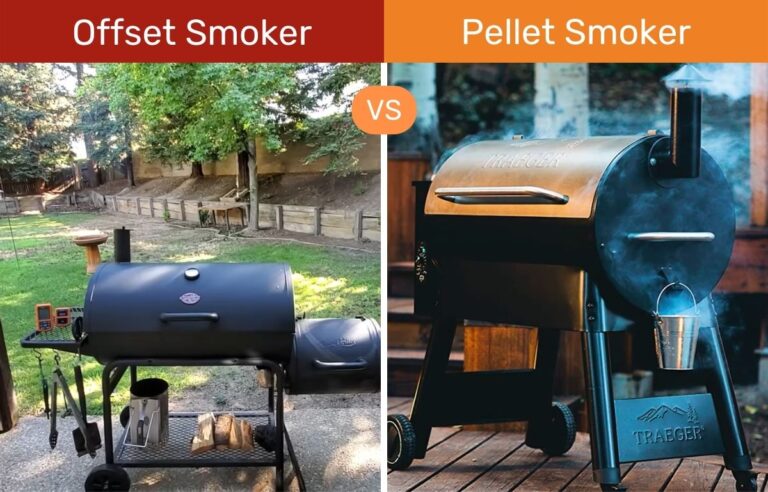What is an Infrared Grill and How it Works: Beginner’s Guide
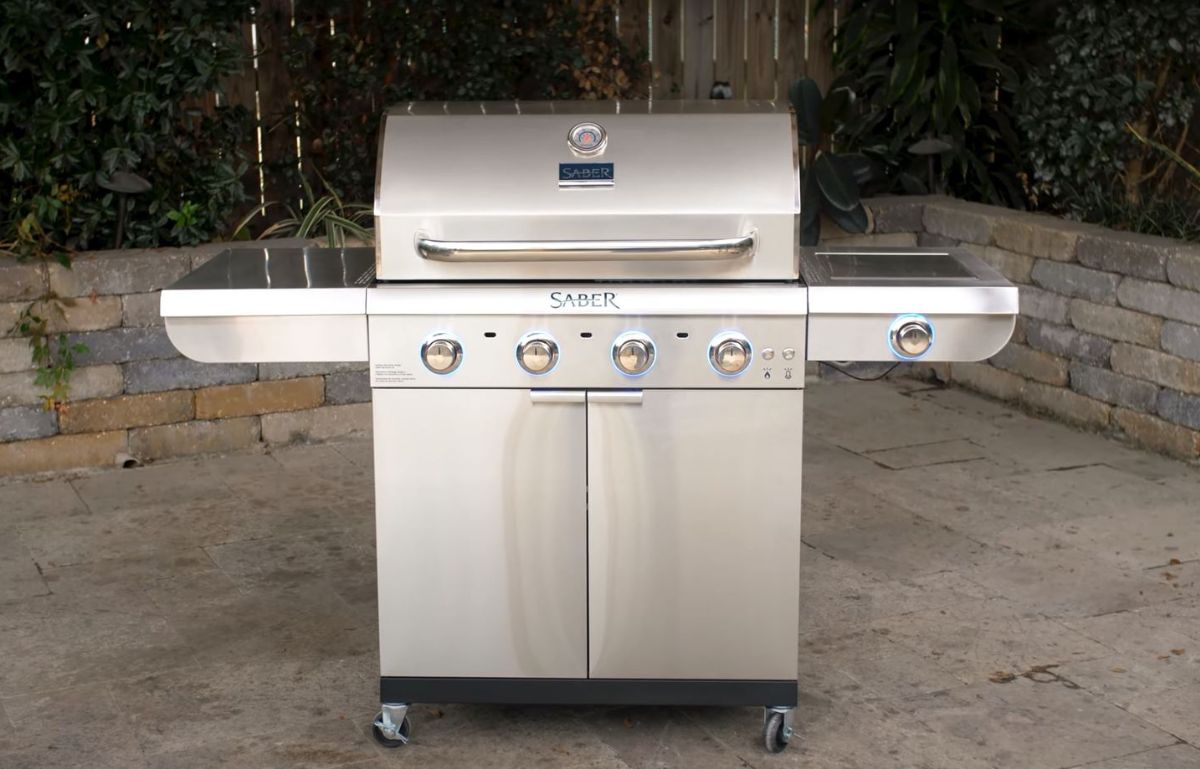
FaveGrills is reader-supported. If you purchase by clicking a link on this page, we may earn an Affiliate Commission at no extra cost. Learn more
Infrared grills are becoming increasingly popular among grillers due to their ability to cook juicy steaks within a few minutes. However, the benefits of using an infrared grill go beyond just speed.
Infrared grills allow for cooking at high heat, which is ideal for searing, roasting, and locking in the food’s natural juices.
The quick ignition and preheating features ensure that the grill is ready to use in no time. Last but not least, they have precise temperature control, making them a suitable device for beginners.
In this article, you will come to know what is an infrared grill, how it works, the foods you can cook over it, and its significant pros and cons. So, read on to discover what makes it a cut above the rest.
Infrared Grill Introduction
The infrared grill is an outdoor cooking device that cooks food faster than traditional BBQ grills because it uses infrared technology, which produces radiant heat to cook meals directly.
In addition to its fast cooking capability, it can reach high temperatures of around 1200 °F within minutes, allowing you to sear and char food for a crispy exterior with grill marks, delicious taste, and texture.
Moreover, infrared grills are known for their versatility in cooking methods that require high heat, such as grilling, baking, and roasting.
Another benefit of these grills is that they are energy efficient. They consume less gas than other gas grills, making them an eco-friendly and cost-effective cooking option.
If you prefer low and slow cooking, you may consider other options besides an infrared grill. Because it can’t produce low heat below 230-250 °F, while other grills can maintain a temperature of 100°F or lower for a long time.
How do Infrared Grills Work?
The significant apparatuses in these grills are a gas burner, a flat plate (made with glass, ceramic, or metal), cooking grates, and control knobs.
As mentioned above, the infrared technology in these grills allows faster cooking. But the heat source that drives this technology can be gas or electricity.

So in IR grills, the working process begins with a gas burner that heats the plate, which produces infrared waves. Because the plate is made of a material that conducts heat well, it heats up quickly and can reach high temperatures faster.
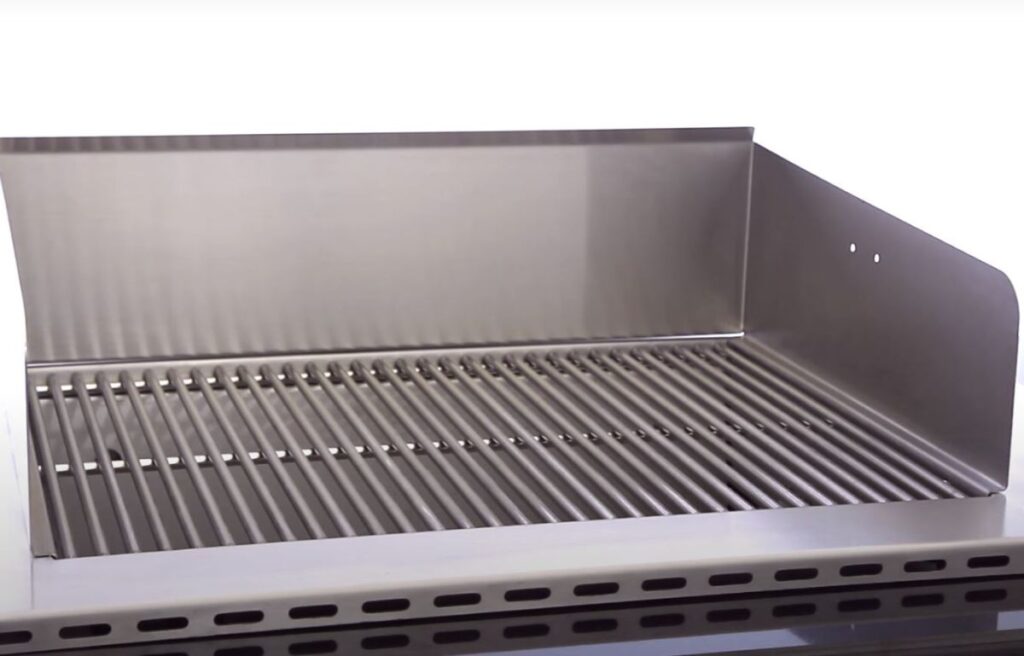
The infrared waves coming from the plate directly heat the cooking grates where you place and cook your food.
Lastly, regulating the gas flow and heat in IR grills is simple. They provide knobs through which you can conveniently control the cooking temperature.
What to cook on Infrared Grills?
Infrared grills are known for their ability to prepare steaks with flavorful taste, grill marks, crispy exterior, and juicy interior. But do you know that they can cook various other delicious foods through different cooking methods?
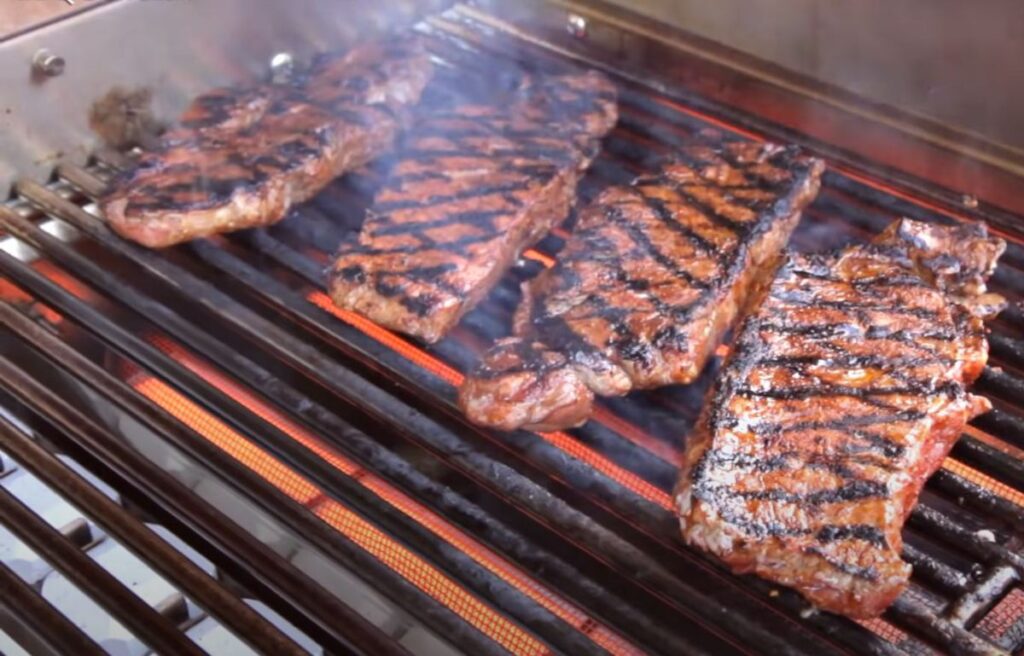
Let’s share some other meals that you can cook.
Different meats you can cook through infrared grilling are steaks, chicken breasts, drumsticks, ribs, and lamb chops. Also, you can try different cooking styles for their preparation, such as roasting, grilling, and steakhouse-quality searing.
IR grills can make multiple fast-food items like hamburgers, hot dogs, chicken wings, and sandwiches faster and with delicious taste.
Although, you can make fish like salmon and halibut, sausages, stuffed vegetables, shrimp, etc. But make sure that you look after the complete cooking session as these are delicate foods and may burn if you overheat them.
What do we like about Infrared Grills?
Like any other grill, there are many advantages and disadvantages of having an infrared grill.
Let’s begin with the pros.
Faster Working:
One of the most popular and well-liked features of these grills is their ability to work at a fast speed. Everything gets done within a few minutes, from heating the grates to cooking the food thoroughly.
If we talk about infrared vs gas grills in terms of preheating, an IR grill requires 2-3 minutes of time, whereas a gas one will take around 10 minutes.
When it comes to cooking duration, these grills stand out with their ability to cook food faster. Let’s take steak preparation as an example. A 1-inch steak takes 10-12 minutes at a temperature of around 250 °F, from preheating the grill to finishing cooking.
Tastier Foods:
The foods you make with these grills have unique and delicious tastes. Due to the high heat, your items get cooked or seared evenly from all sides. As a result, your meal’s natural juices and flavors remain inside it.
Most people prefer a crispy exterior with a tendered texture on the food, that’s one of the most noticeable advantages of infrared grilling.
High Heat and Multiple Cooking Options:
If you love to cook at higher temperatures, look no further than IR grills. Because they can touch 1200 °F, and some new models can also reach 1300 °F.
The infrared waves from the metal plate provide consistent, even, and high radiant heat, allowing you to sear, bake, roast, and grill various food items.
Beginner-Friendly:
What do you look for inside a beginner-friendly grill, easy ignition, and temperature control? Or Infrared grills are a breeze to use thanks to their hassle-free ignition and simple temperature control.
Unlike other traditional grills, they have a quick ignition which saves your time and does not require any expertise. Moreover, you get control knobs for convenient and precise temperature control.
Energy-Efficient:
The heat loss in infrared cooking methods is way less than in gas and charcoal grilling. The plate that produces infrared energy and the grates heat up quickly, which saves a lot of fuel.
A rough estimate says that an IR grill consumes 50 percent less energy than gas grills if you cook at the same temperature for the same duration.
What we don’t like?
Despite its benefits, infrared grills also have a few drawbacks.
Lack of Low Temp Cooking:
Undoubtedly, these grills are a beast when the goal is to cook food in minutes using higher temperatures, but they lack in providing lower heat. Most infrared grills can give as low temperatures as 200 °F to 250 °F.
Due to this, you may not be able to properly prepare food items that require a more delicate or slower cooking process, such as fish and vegetables.
Expensive:
One of the most popular drawbacks of IR grills is that they are comparatively more expensive than other traditional grills. This is because they use many advanced technologies to make them convenient.
Also, the material used in constructing infrared energy-producing plates is ceramic, metal, or glass. There are also some budget-friendly options available if you explore them.
Not Easy to Carry:
Infrared grills that are heavier and larger can be difficult to carry from one place to another. It is not a substantial disadvantage because there are many other models available.
Some are smaller and made explicitly for outdoor use, and many have wheels in their structure that allow you to move them quickly.
Also See
How to clean an infrared grill?
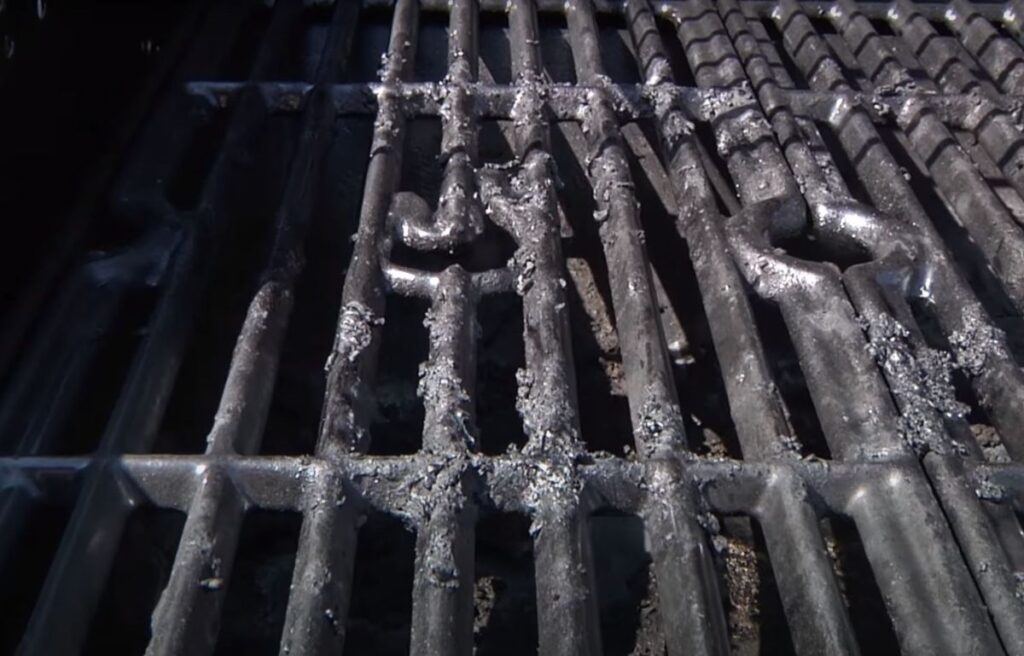
The infrared grill is easier to clean and does not require any extra effort or expertise.
The grates and infrared plate contain most food particles and grease, requiring more cleaning than the other parts. Here are the steps you need to follow for a thorough cleanup.
- Begin by heating the grates to high heat, which will burn away most food debris.
- Once the grates cool down, use a wire brush to scrape off any remaining residue that couldn’t burn through heating.
- Mix warm water and dish soap to create a cleaning solution.
- Use a sponge and soapy water to clean the cooking surface one final time.
- Rinse the grates with clean water to remove any food particles or residue.
- For the plate, you can follow the same steps. Scrape it with a grill brush to remove any debris.
- Clean the plate using soapy water and a sponge, then wipe it down with a cloth.
- Finally, rinse the plate with water to remove any wreck, then you’ll be ready to cook again.
Who should buy an infrared grill?
You can confidently rely on these grills if you like to prepare food faster, especially steaks, because they heat up quickly and can maintain high heat for a long time.
Using higher temperatures (around 1300 °F), you can grill, roast, bake, and sear meats and other food items within a few minutes. If we talk about the taste, you get juicy meat with a crusty surface, grill marks, and tendered texture.
Furthermore, if you are a newbie looking for advanced cooking devices, an infrared grill fits your skills and needs very well. Because starting it up is effortless, and you can conveniently control the temperature using the knobs.
Top Tip by FaveGrills
When the goal is to clean infrared grills, there are several other methods to explore and choose from, so find the one that works best for you and your supplies.
Final Thoughts
You now have a comprehensive understanding of what is an infrared grill, how it works, what you can cook on it, and its benefits and drawbacks. With this information, you can decide whether this grill fits your cooking needs.
In other words, you need to choose between fast or slow cooking, complex or easy temperature control, quick or late ignition, juiciness in the food, smoky flavors, etc. Set your preferences, and our guide will help you make a suitable decision.
Frequently Asked Questions
Let’s share some of the most common FAQs.
Can you use infrared grills for both high-heat and low-heat cooking?
Although you can use them for high and low-heat cooking, the results would not be the same. These grills are typically designed to cook faster at higher heats but can lack a bit when you cook at lower temperatures. As a result, low and high heat are not evenly beneficial.
Do you have to preheat the infrared grill?
Yes, you should preheat it for 5-7 minutes. Preheating helps the grill reach the desired cooking temperature before you place your food over it. It is also helpful in even and consistent cooking with a stabilized temperature. Lastly, your food items don’t stick on the grates when you preheat them.
Is there any impact of wind on infrared grills?
Yes, there is an impact of wind on these grills. It can cause the flame to extinguish or flicker. As a result, you struggle to maintain the required temperature for even and consistent cooking.
Your Opinion is Valuable to Us
With all the information about an infrared grill at your fingertips, you can easily decide whether it suits your cooking needs or any other traditional grill. Also, if you have any further questions regarding this, you can leave them in the comment box.

